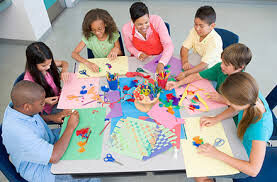Making Content Accessible to ALL
 All students need access to core content, but all students don’t learn the same way nor do they come into the classroom with the same content knowledge, experiences and beliefs about learning. Gifted children need to be challenged, students with learning disabilities need content that builds upon their unique strengths, and students who are english language learners need access to language to make content comprehensible .
All students need access to core content, but all students don’t learn the same way nor do they come into the classroom with the same content knowledge, experiences and beliefs about learning. Gifted children need to be challenged, students with learning disabilities need content that builds upon their unique strengths, and students who are english language learners need access to language to make content comprehensible .
Today’s general education classroom consists of ALL learners and it is the teacher who becomes the great equalizer as they make instructional decisions that influence the learning of all students int their classroom. Instructional decisions include how they manage the classroom , assess all learners, and design instruction.
Universal Design for Learning provides a blueprint for designing instruction. Teachers however still need to be cognizant of strategies that work for all learners and able to successfully implement approaches that will support ALL students in mastering content.
A student with cognitive disabilities will have difficulty with mental tasks. This might include memory, note-taking, reading comprehension, visual and auditory processing. Best practices for teachers to include are:
- Model the processes and skills being taught.
- Make use of available technology such as Google Dictate for word processing, calculators, and white boards for displays and interactivity.
- Provide representations of concepts you are teaching with pictures, hands-on experiences, and visual models.
- Use cooperative learning groups and peer tutoring to support understanding and application,
- Develop daily routines to promote consistency and repetition, and
- Give students an opportunity to apply conceptual applications and skills in authentic experiences that support transfer.
Gifted students are often straddled with the task of helping others but such requests fail to challenge students and provide enriched activities. Rather than give students more work, peer tutoring tasks, or “free time” meet the needs of gifted students by:
- Allow time for exploration and independent study,
- Promote multiple solutions and opportunities to explain their thinking,
- Encourage inquiry based tasks that are built on students’ questions and an include an opportunity for students to determine the answers,
- Create activities that encourage connections across content areas,
- Include opportunities for authentic assessment which promote open-ended responses, and
- Use technology that builds on students interest and autonomy in tasks.
What are your best practices for supporting ALL learners in your classroom?




